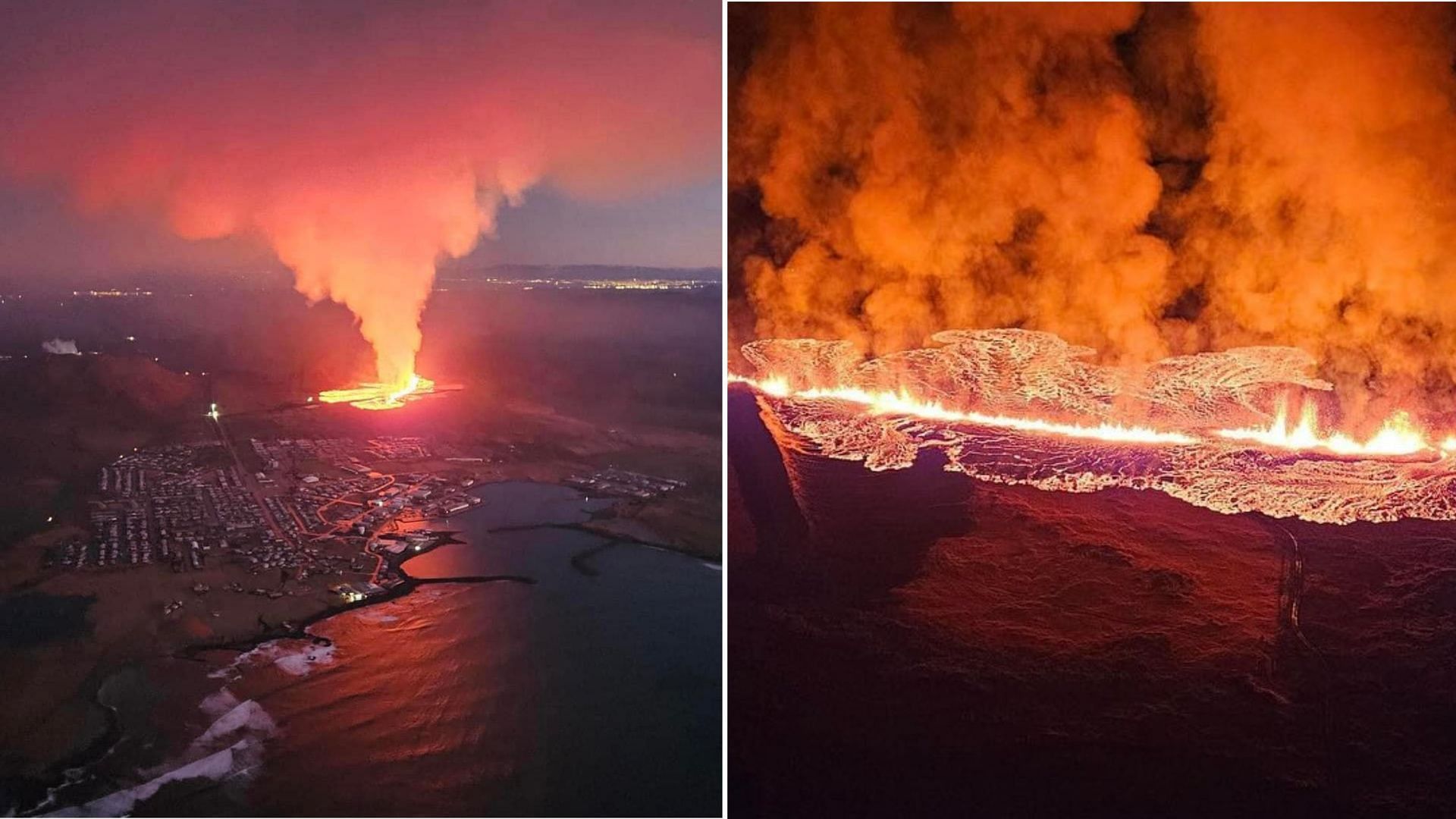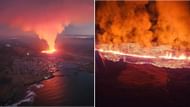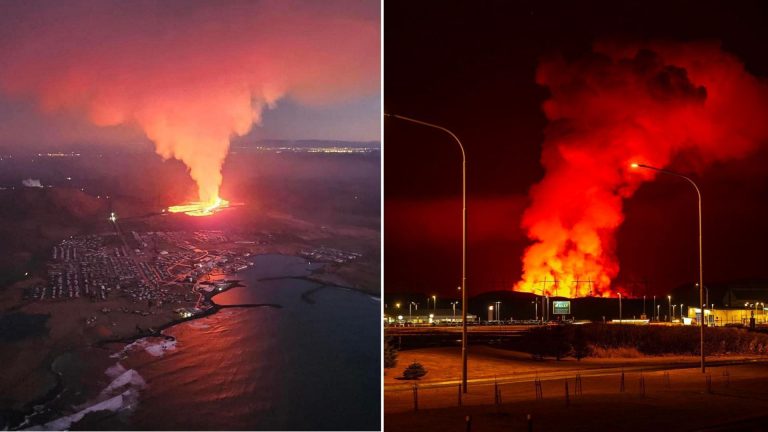A volcano erupted in Southwest Icelandic Peninsula Reykjanes, On Sunday, January 14 at approximately 8 a.m. local time. This came after several earthquakes were recorded near the city in Iceland, according to the Icelandic Meteorological Office (IMO).
The eruption caused the sky to turn orange and put the country's civil defense on high alert. Live footage of the volcanic eruption was spread on various social media platforms, and molten rocks and smoke were seen flowing from fractures in the ground, affecting a large area near the town of Grindavik.
According to Channel NewsAsia, the incident occurred after the majority of Grindavik's 4,000 residents were evacuated on November 11, 2023, as a precaution, due to scientists' claims that the magma tunnel beneath them was moving.
No one was hurt during the volcanic eruption in Iceland


After the volcano's eruption on Sunday, lava flowed to the outskirts of a nearby fishing town, according to Reuters. This led to some houses catching fire. The town was evacuated, and none of its residents were harmed.
According to The Telegraph, the Icelandic Meteorological Office said:
“According to the first images from the Coast Guard surveillance flight, a crack has opened on either side of the defenses that have begun to be built north of Grindavik.”
They added:
“From Icelandic Coast Guard helicopter measurements, the (lava) circumference is now about 450 meters (yards) from the northernmost houses of the city.”
Furthermore, authorities issued an emergency evacuation order late on Saturday, January 13, requiring residents to leave the island by Monday, January 15, citing massive fissures in the area and increased chances of earthquakes. However, as seismic activity increased overnight, authorities accelerated the evacuation order.
Nearly 4,000 residents were evacuated during the volcanic eruption last December
According to sources like Barron's, the nearest fishing town, Grindavik, was 3 kilometers from the southern end of the fault when authorities evacuated about 4,000 residents in November. This was due to concerns about an imminent eruption after hundreds of minor tremors rocked the area.
Since the evacuation, residents have only been allowed to return for short periods after the first eruption, which occurred on December 18. Furthermore, on December 22, they were given permission to return home permanently, according to CBS News. However, very few people choose to do so.
In an attempt to prevent lava from reaching Grindavik, located 40 kilometers (25 miles) southwest of Reykjavik, authorities erected barriers made of rocks and dirt. However, according to Reuters, the latest eruption appears to have breached the city's defences.
In the past three years, there have been five volcanic eruptions in Iceland. After the eruption on December 18, the last eruption occurred on January 14 at the same location. Hence, this marks the second explosion on the Reykjanes Peninsula in less than a month.
The popular Blue Lagoon geothermal resort has been temporarily closed following the recent eruption. Flights to and from the country are expected to operate as usual.

